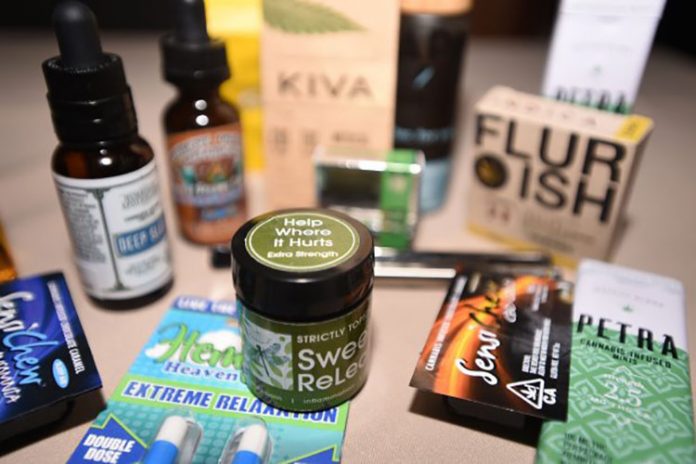Industry rarely calls out for more regulation, but a new marijuana startup sees creating nationally standardized rules as key to the future of the pot business.
The National Association of Cannabis Businesses wants to help its members—numbering about 30 so far—navigate balkanized rules from states, counties and cities by providing the closest thing it can to unified national regulation, even as pot remains illegal at the federal level.
The group already has put out a labeling standard and are working on others for advertising, pesticide use, manufacturing and bookkeeping. “You would not believe the shoddiness of the records of most of the industry today,” said Joshua Laterman, NACB’s chief executive.
It isn’t clear that what the NACB envisions—a government-sanctioned self-regulatory organization—is the answer. But state governments and companies are in rare agreement that a standardized, nationwide approach would help a lot.
Cannabis has come a long way since the “war on drugs” of the 1970s and 80s, when both federal and local laws treated selling pot—or even holding it—as a criminal offense. Since 1996, 29 states have legalized marijuana for medical use. Nine of those and the District of Columbia have also legalized recreational use.
Sales of legal marijuana are expected to grow to $10.82 billion before the end of 2018, up from $7.97 billion a year ago, according to New Frontier Data, which provides market research on the cannabis industry. That’s despite mixed signals from successive administrations and a federal ban on the drug.
President Barack Obama directed his Justice Department not to enforce the federal ban in states that had legalized pot. Attorney General Jeff Sessions reversed that approach, although he is largely going it alone, as Congress is considering bipartisan bills in both chambers to let states decide whether to legalize or ban marijuana and President Donald Trump said he would probably support that legislation.
As long as pot remains illegal at the federal level, there can’t be national regulation. That means agencies such as the Food and Drug Administration and the Agriculture Department can’t provide the usual guidelines.
So the NACB is stepping in and taking specific measures to make the business more predictable, while also fighting an image of a lawless, wild west industry.
As larger cannabis businesses expand into multiple states, they have had to navigate a variety of local regulations in a way that has made growth more difficult. Chicago-based marijuana grower and seller Green Thumb Industries employs separate accountants and regulatory attorneys for every state it operates in.
“The mundane in this business is really hard,” said Chief Executive Pete Kadens. Many insurers won’t cover a business that violates federal law, and it takes lengthy conversations with potential landlords about liability to secure a lease.
Much of the attention in recent years has been on the difficulty the federal ban places on pot companies seeking banking services. Yet the regulatory needs reach far beyond financial services, and congressional bills could pave the way.
Thus the NACB is making its process as government-like as possible. Before a labeling and package standard was released in May, the NACB first submitted a draft for public-comment period—just like a government agency. The labeling standards include banning anything that could be seen as marketing to children, similar to federal rules on cigarette packaging. Nevada has already banned pictures on marijuana labels, but many cannabis businesses in Colorado now use pictures of fruit on their labels.
The NACB aspires to become a self-regulatory body akin to the Financial Industry Regulatory Authority, which is authorized by Congress to craft and enforce rules for brokers and broker-dealer firms. While Finra is a not-for-profit, NACB hopes to make money off the venture.
The NACB is still a small player in the larger effort to gain legitimacy for pot businesses. It doesn’t have a physical office—just a handful of people working remotely on laptops—and it has signed just a few dozen members. But many are larger companies that operate across states, and the effort has been welcomed by both state governments and industry.
“Most states rely on the EPA to determine both correct pesticide labeling and pesticide usage, but the EPA is not going to weigh in on this,” said Andrew Freedman, who oversaw the creation of Colorado’s cannabis regulation.
“It’s an enormously complicated system which most of the time is not left in the state’s hands,” Mr. Freedman said.
It is possible that legalization could mean an organization like the NACB isn’t needed anymore. Jonathan Macey, a Yale University law professor who has studied these sorts of groups, noted that alcohol and tobacco are both very tightly regulated without a self-regulatory organization.
Mr. Macey argued that the best use for an organization like the NACB would be in setting voluntary quality standards.
Right now, though, maneuvering through the mishmash of rules and legislation is weighing on an already difficult industry, says Amanda Ostrowitz, who co-founded a company called CannaRegs to maintain a national database of marijuana regulations.
“These laws are very different from state to state, they are very detailed, and the minute you get ahold of them, they change,” she said.














